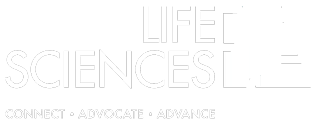 By Peter Freska, CEBS, Advisor
By Peter Freska, CEBS, Advisor
The LBL Group
A United Benefit Advisors Partner Firm
I have sat with hundreds of employers that want to make a difference. They want to make a difference in how their teams work, how productive the employees are, and better yet…in how they, as an employer, can attract, retain and engage the best and brightest people for long-term sustainable (profitable) growth of the organization. But many companies fall short. And, while most employees are 100% engaged when they start a new job, a recent Dale Carnegie Training study indicated that only 29% are fully engaged. In another article entitled “Overcoming Employee Disengagement,” the author mentions that the “2013 RAND Health Study found that less than half of employees (46%) participate in health risk assessment (HRA) or clinical screenings, and out of those identified as needing a wellness program, less than one fifth chose to participate.” (August 2014, Benefits Magazine) The point of the article was simple, that people create their own barriers to success.
So the question to pose is: With such low levels of overall engagement and low participation in something like an HRA, a simple thing that could help save a person’s life, what can an employer do to really affect personal change for their employees? The answers are in Total Population Health Management, but let’s concentrate on why employees maintain barriers and what is needed to make a difference.
When companies build and develop programs, they typically have productivity, efficiency, or most likely cost reduction motives. Well, what if a company builds a program that changes this paradigm by concentrating on more than just the bottom line?
For example, Costco is well noted for turning its nose to Wall Street in years past. Costco pays its employees a living wage, provides benefits for almost 90% of its employees, the CEO earns much less than others in similar size companies, and it paid workers $1.50 per hour more over three years during economic crisis. And the result of all these things is a fantastic shopping experience for you and me, with employees who tend to be fiercely loyal to the company and the members they serve.
There are more examples of service to the employees and customers that come to mind…Trader Joe’s, TOMS Shoes, and Dogeared to name a few. All of these companies are working to do their part to make this world a better place, while still being a profitable company.
The methods that these organizations implement tend to break down the personal barriers that employees build up. These personal barriers come in many varieties; from emotional to cognitive, to environmental and deep-rooted habits, and even physiological. By creating a unified mission, vision, and set of core values at the root of an organizations culture, these personal barriers gradually diminish. And, as you know, just saying or writing it is not enough. Organizations need to actually live it every day. In fact, to really establish an organization’s foundation of culture and values, these things need to happen every day through ongoing learning and reinforcement.
Download the complimentary UBA white paper, “A Business Case for Benefits Communications,” from http://bit.ly/1gJR3GE for further information on employee engagement and communication strategies.





